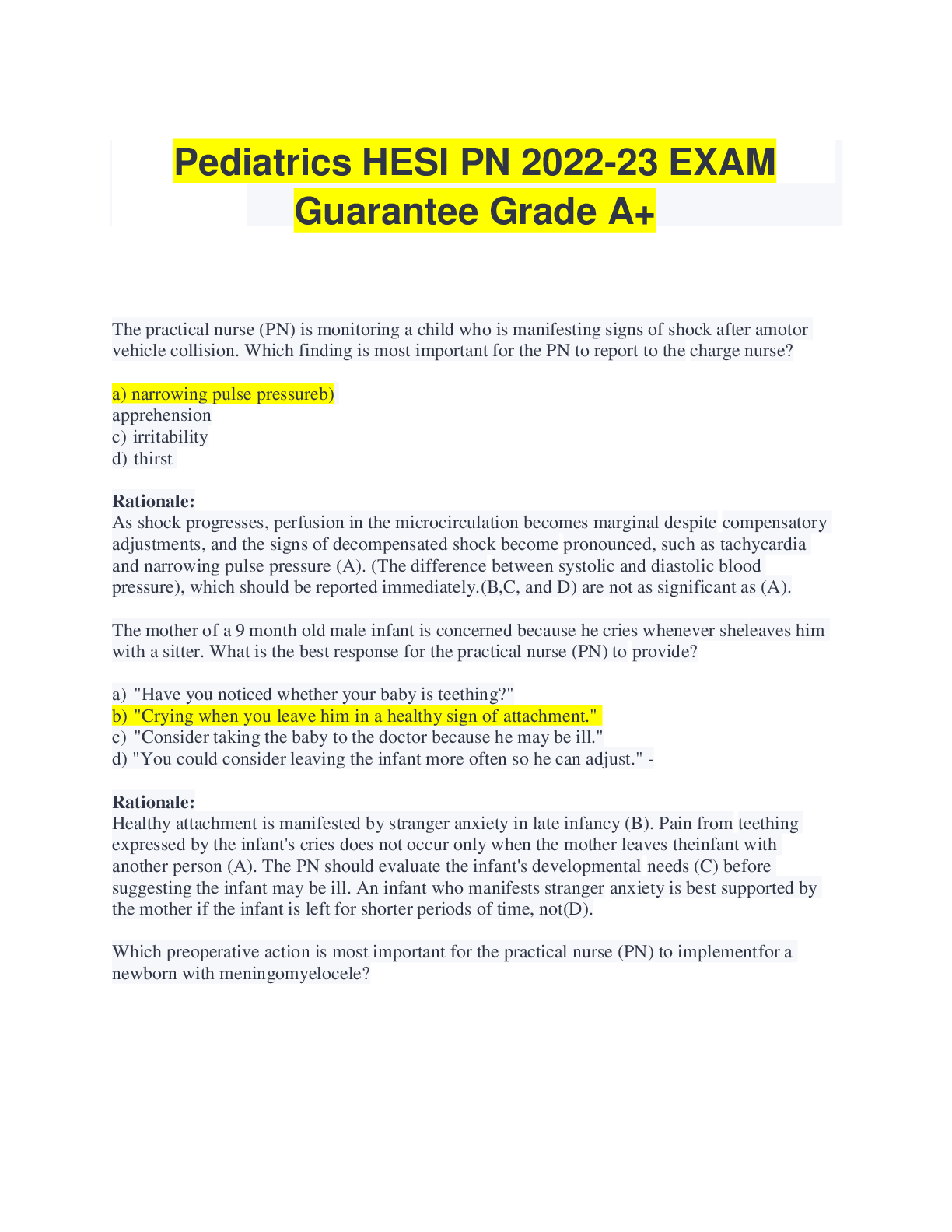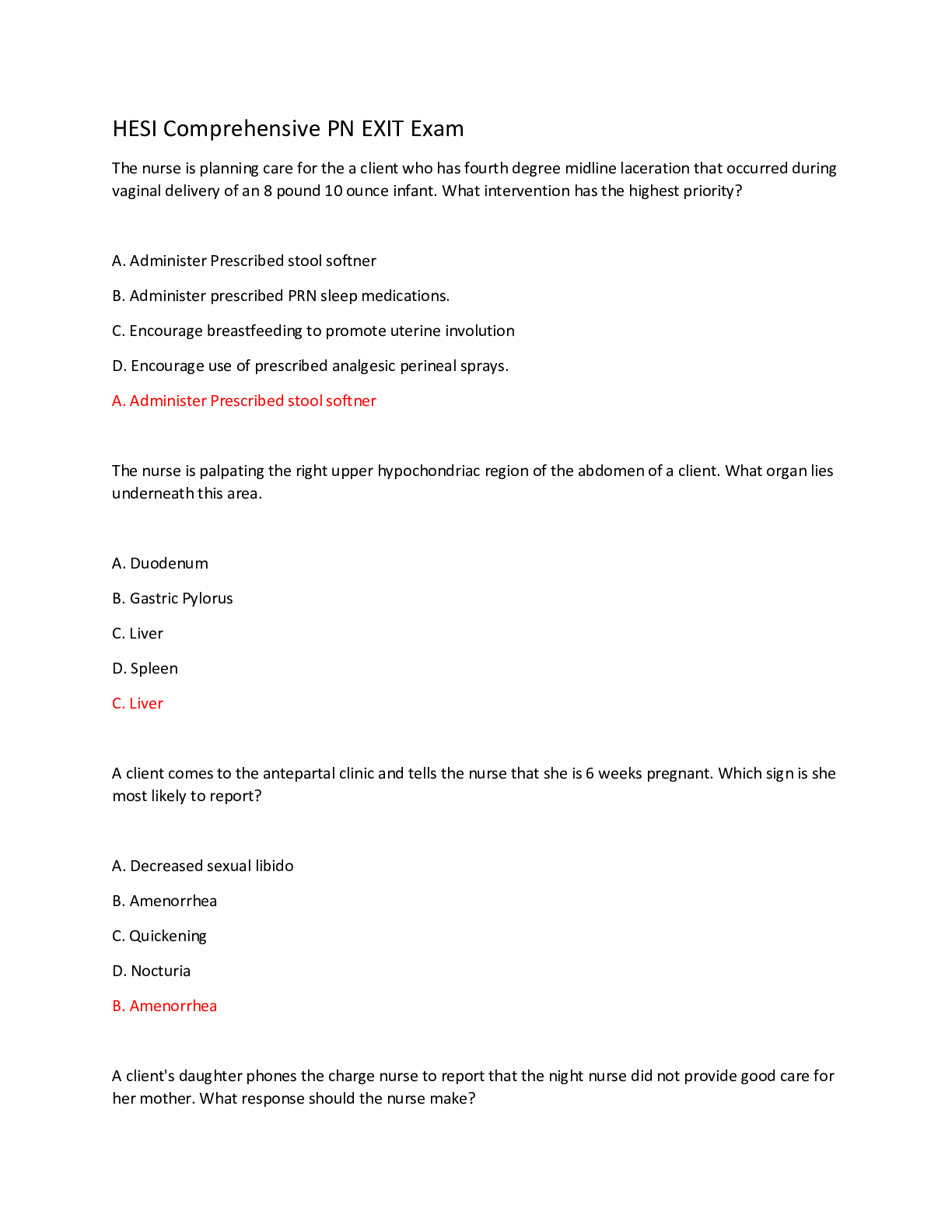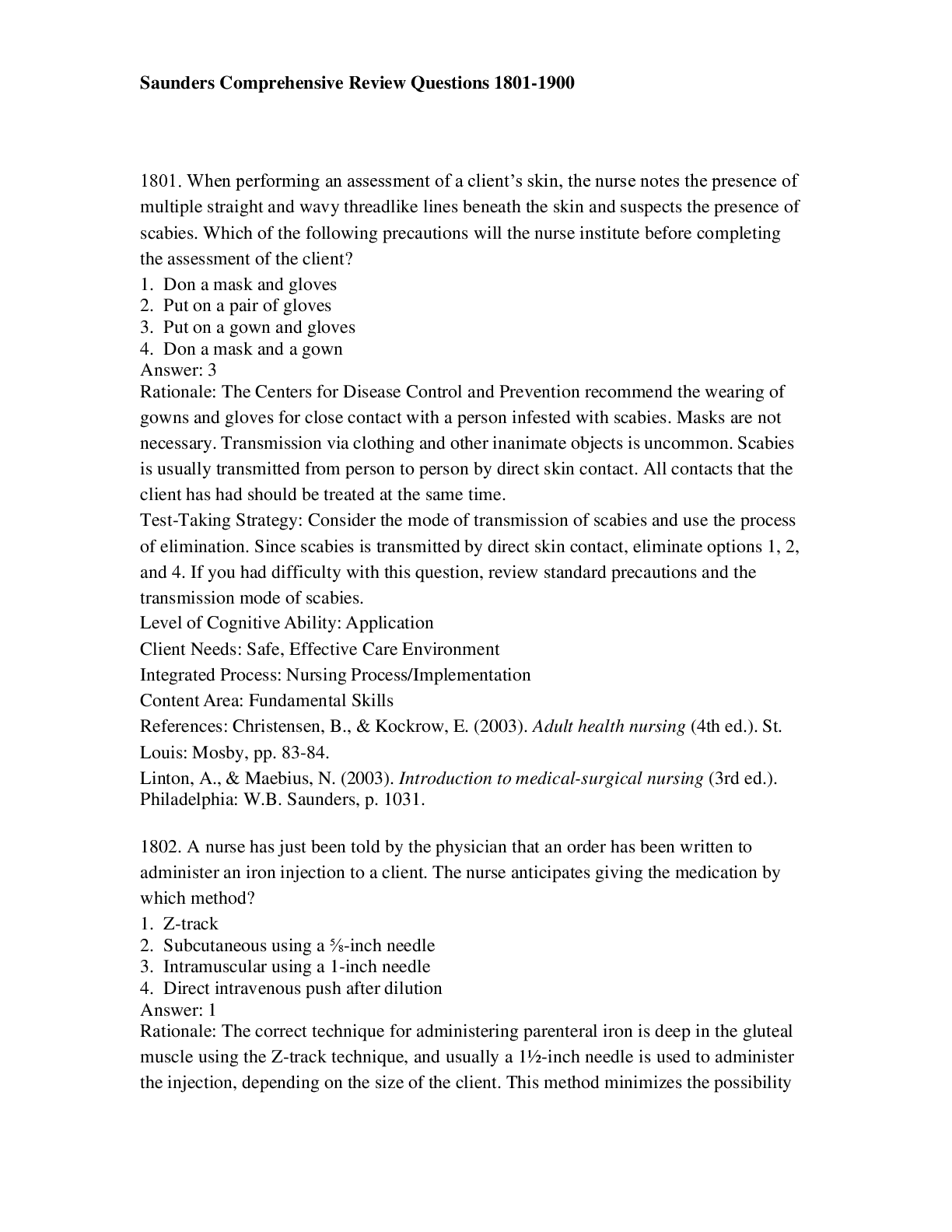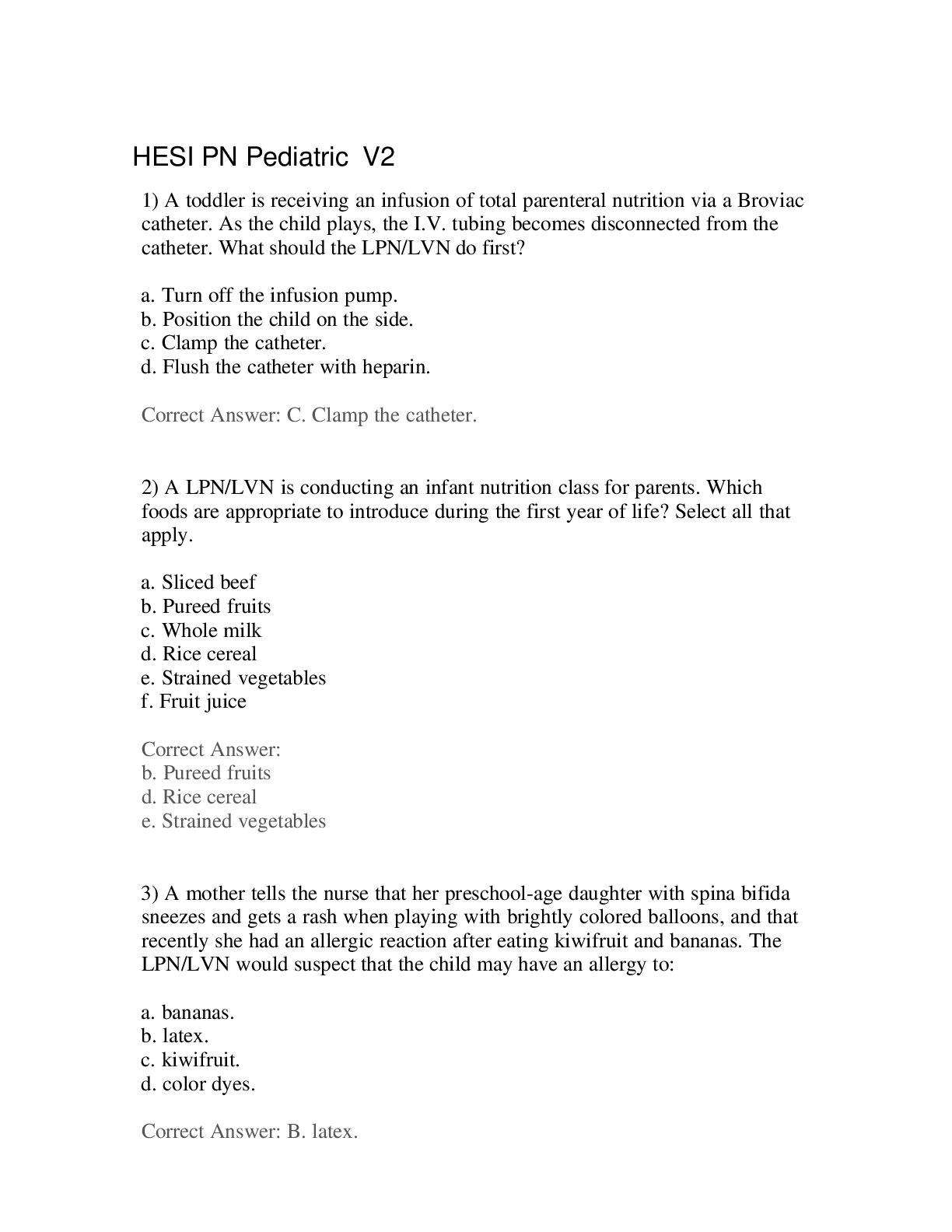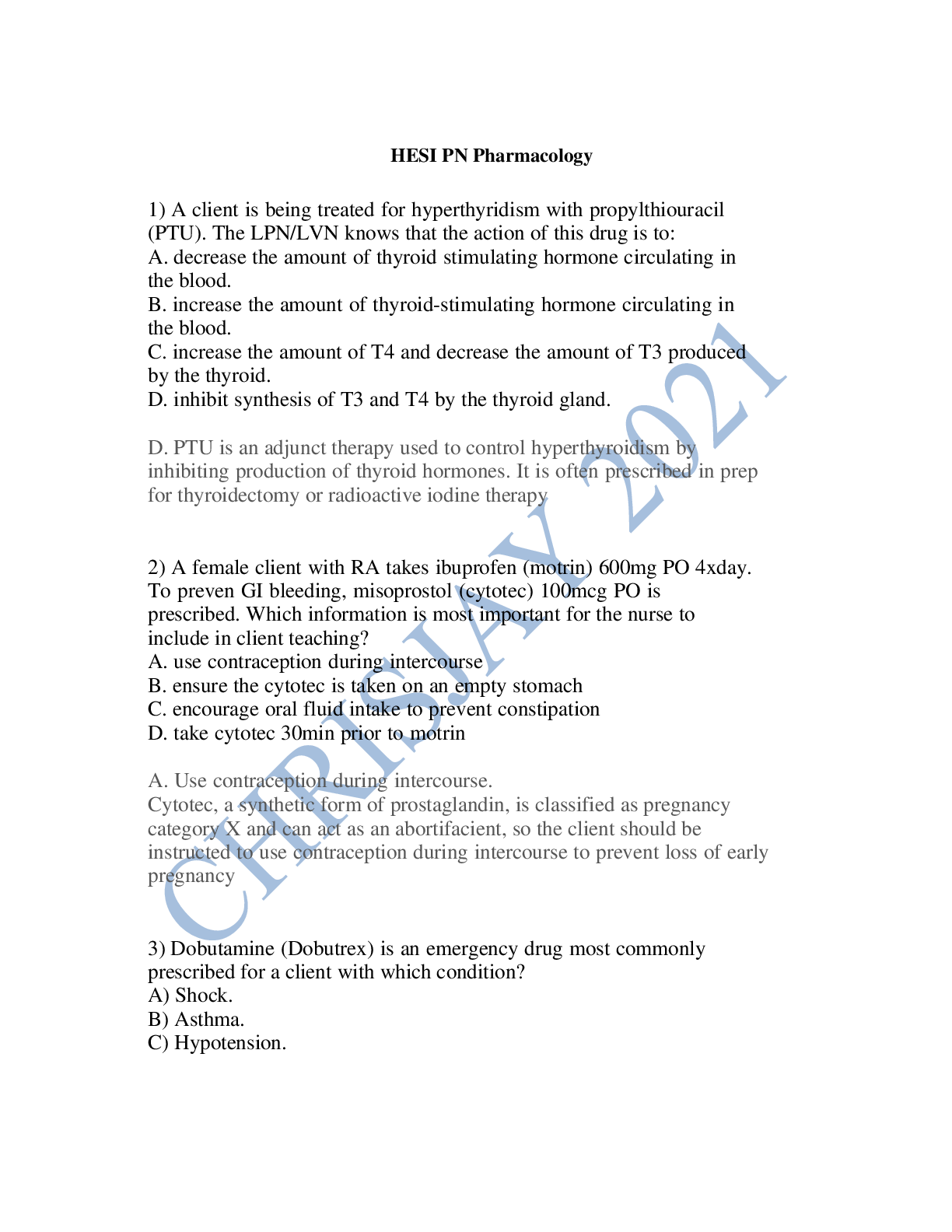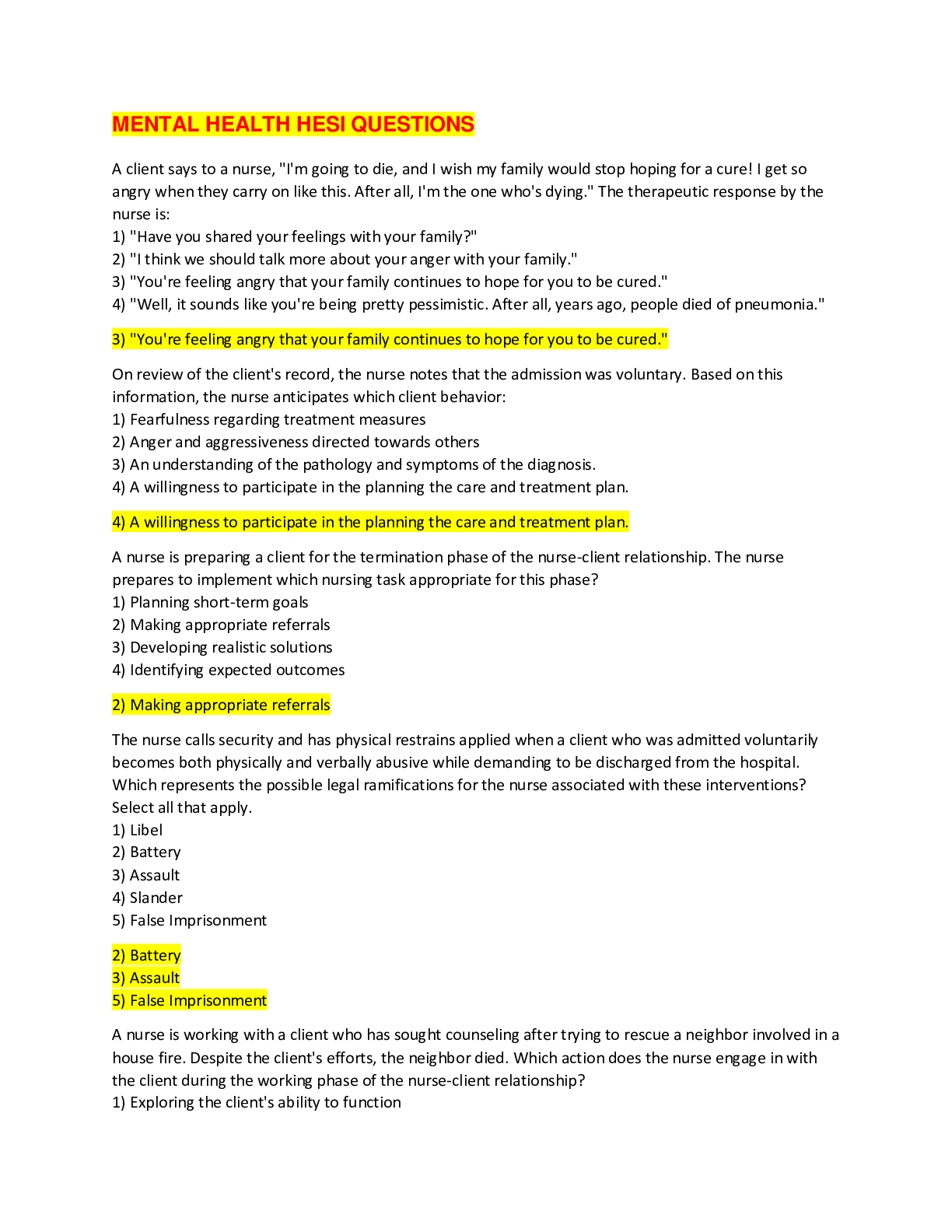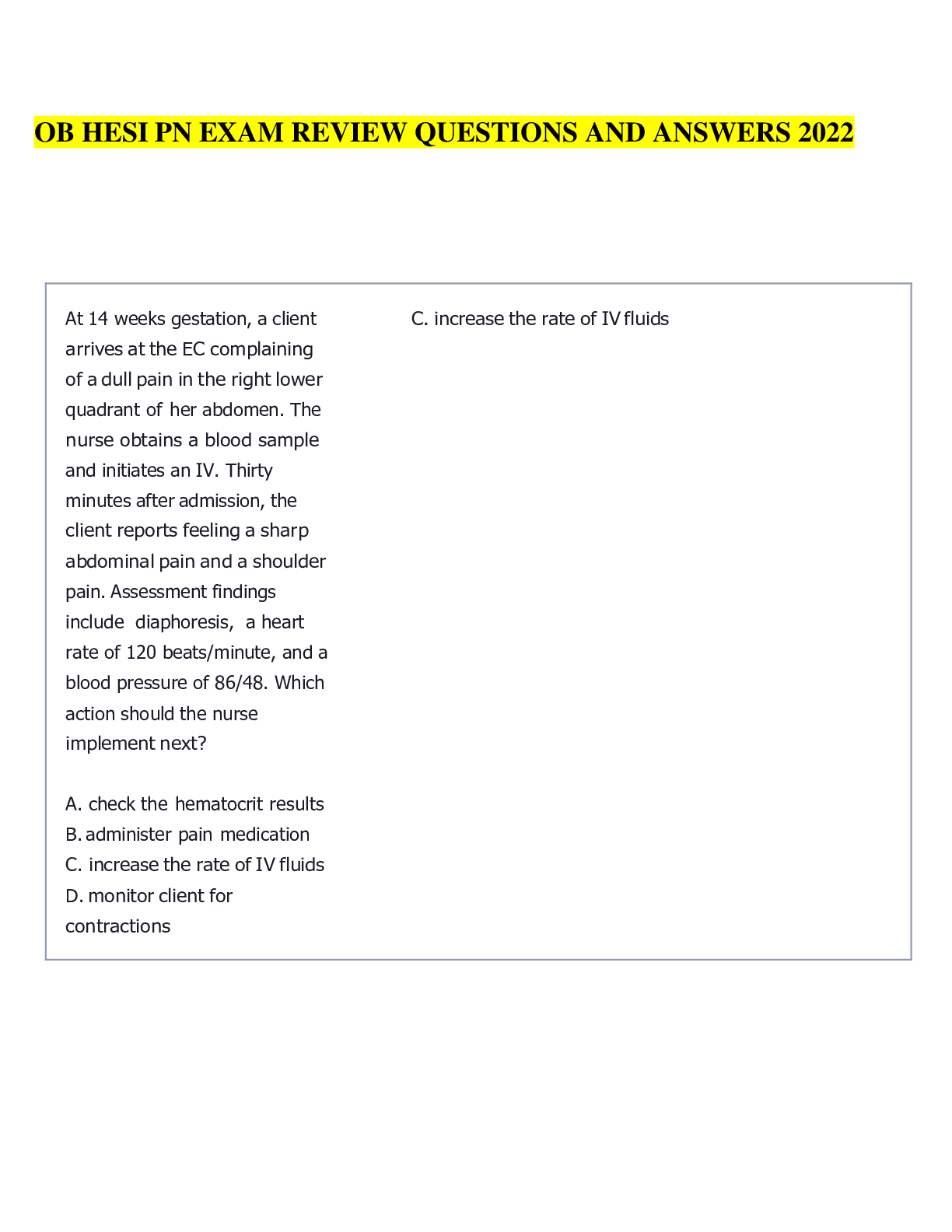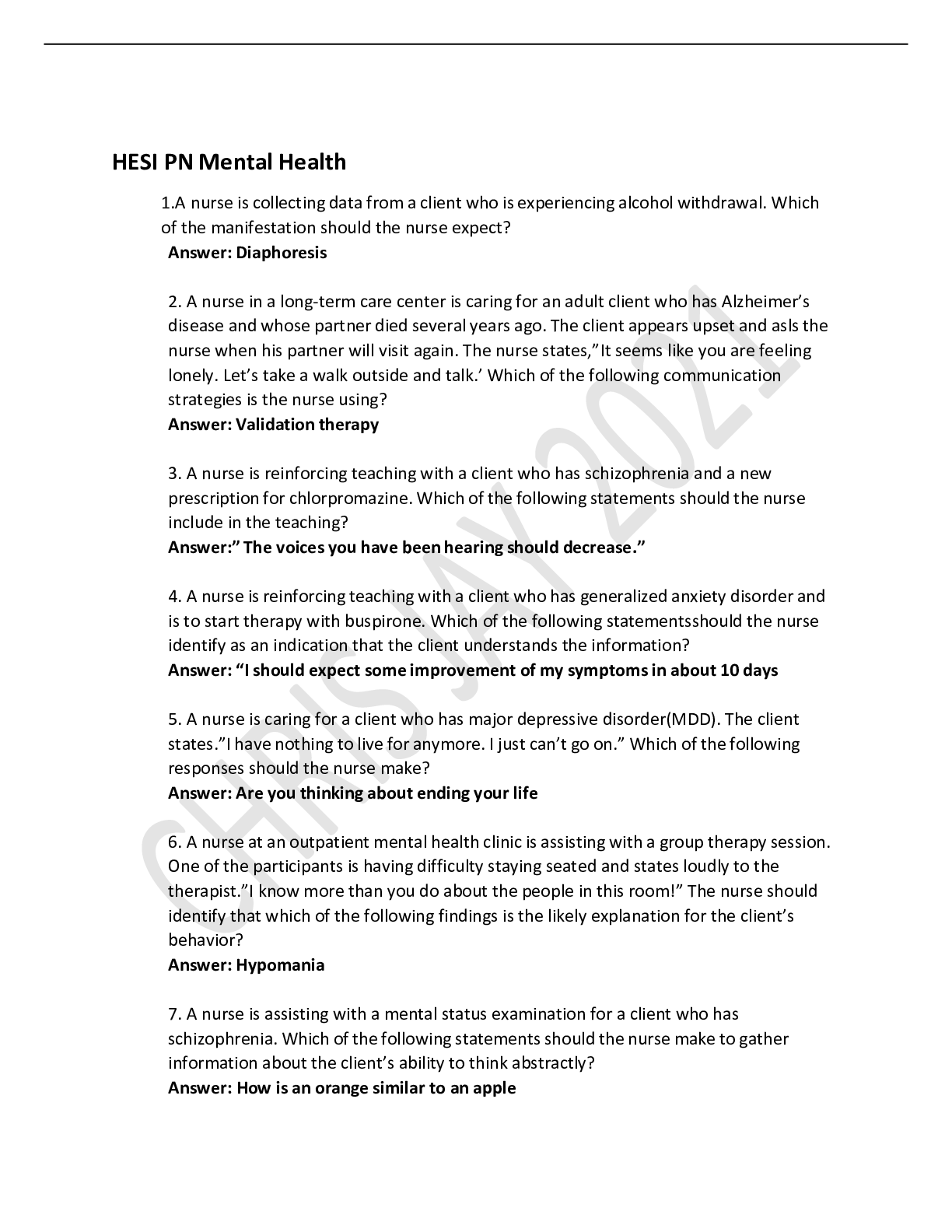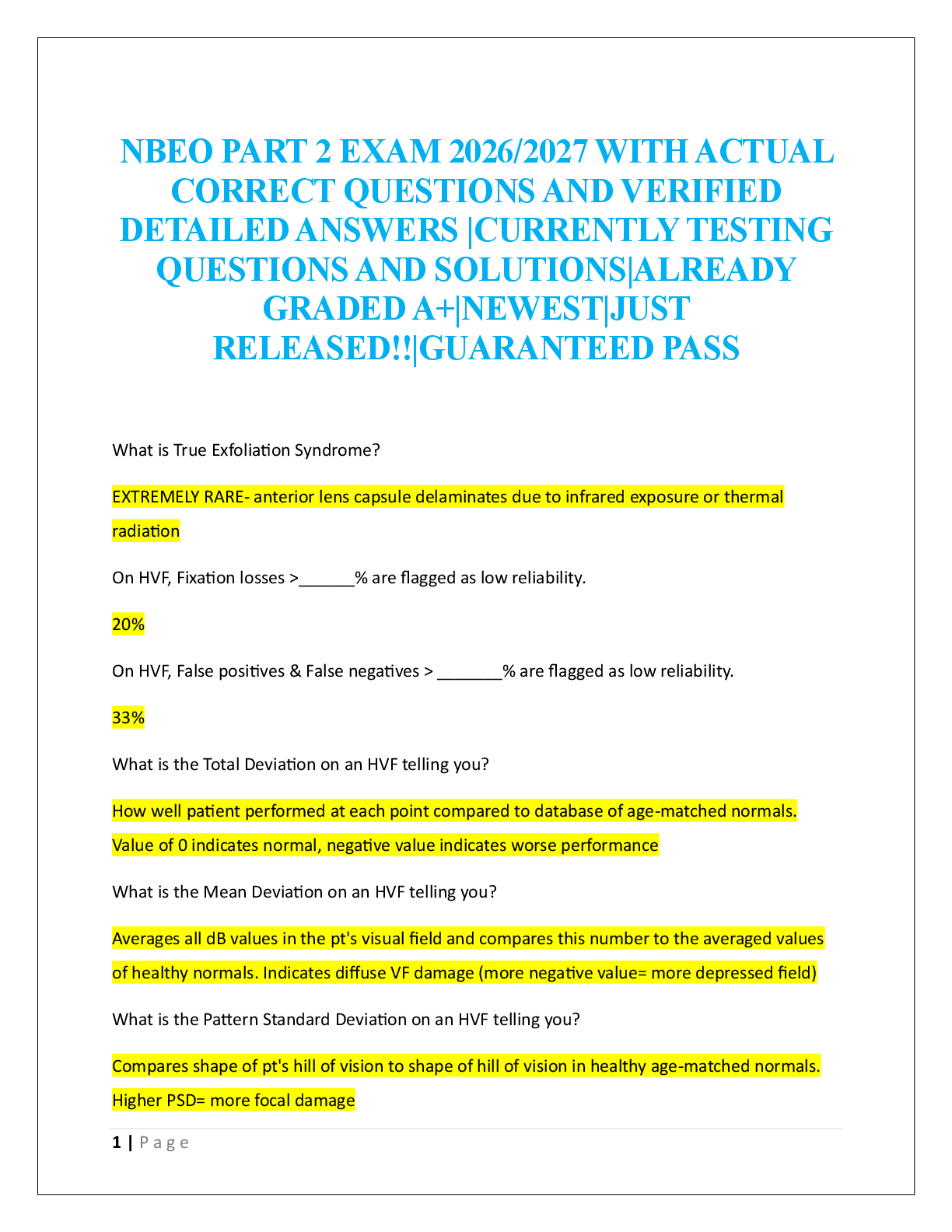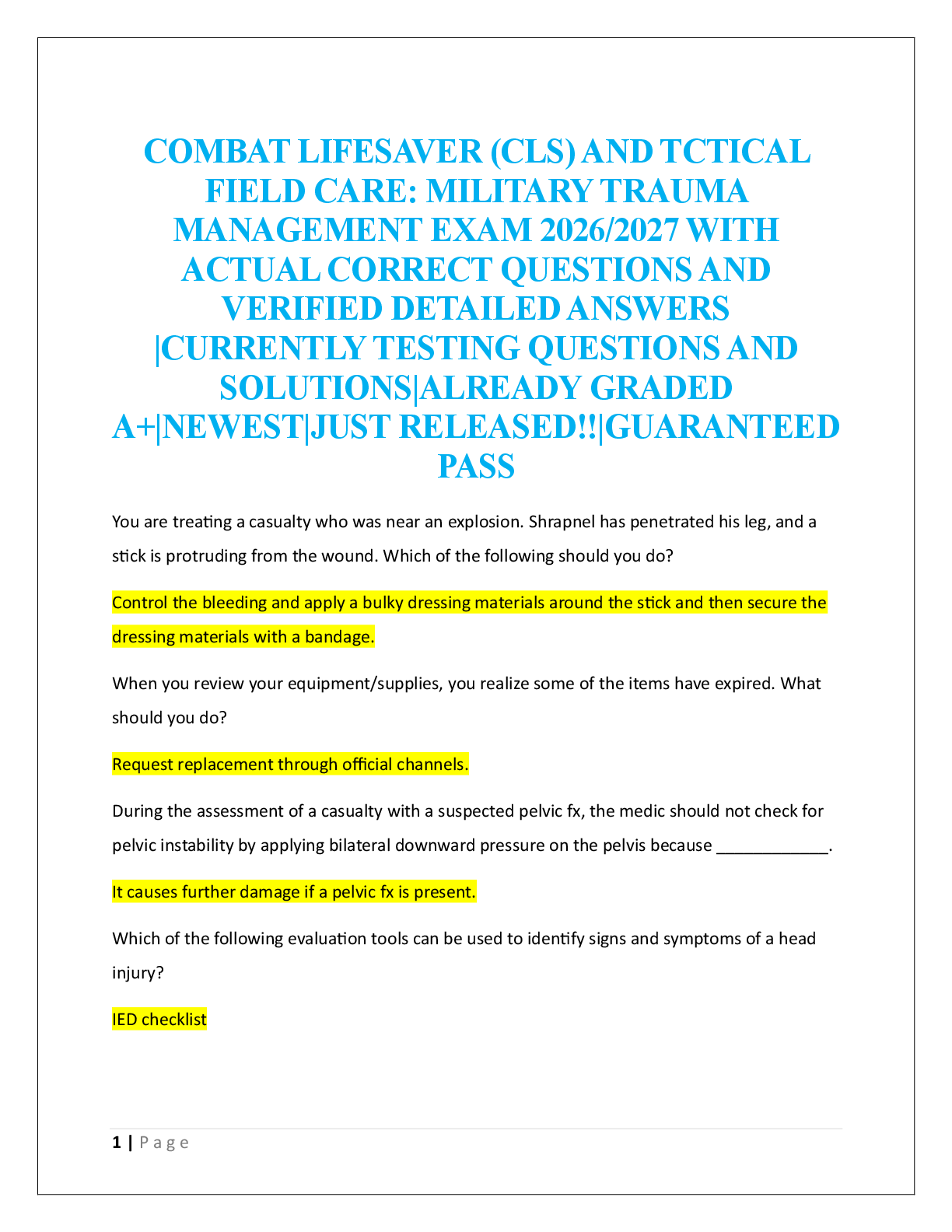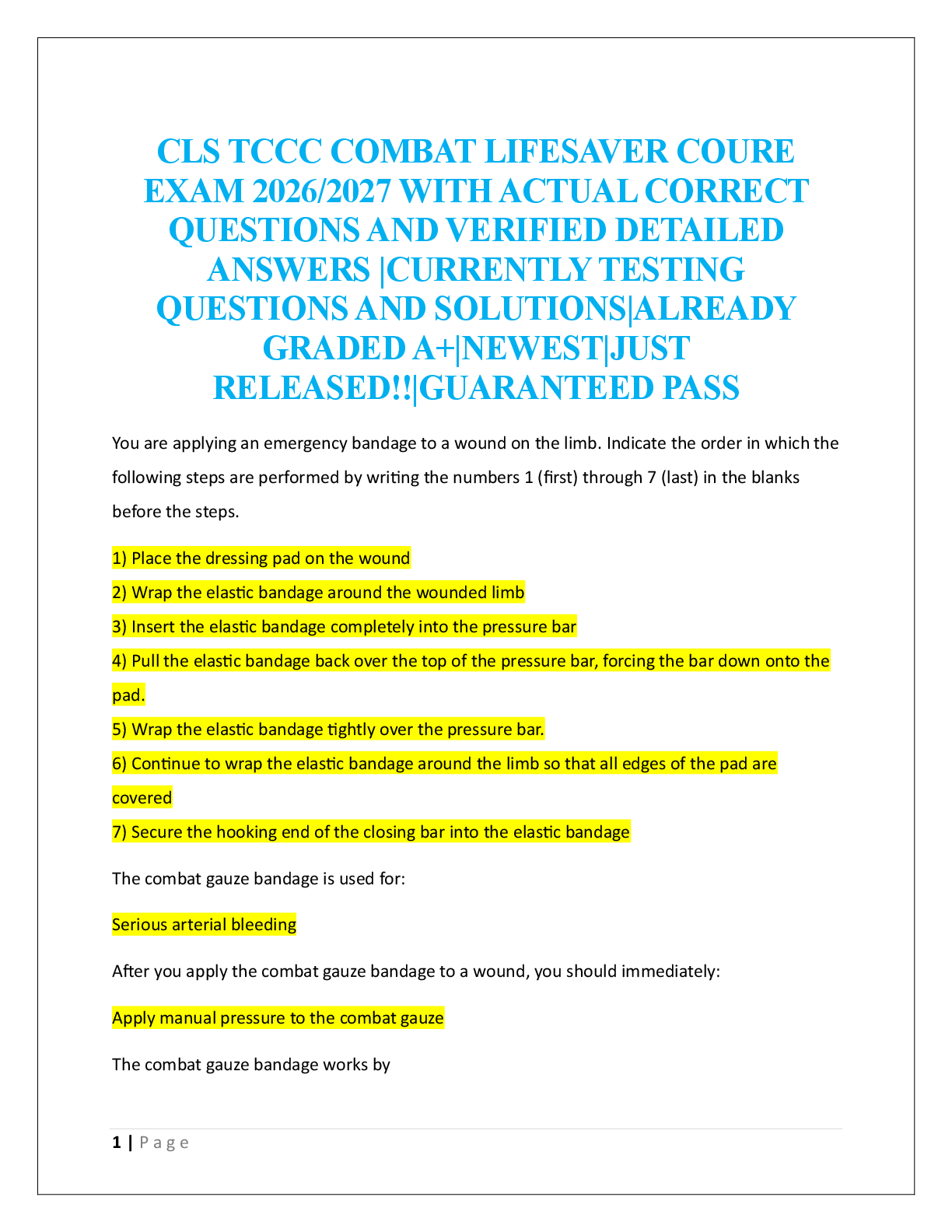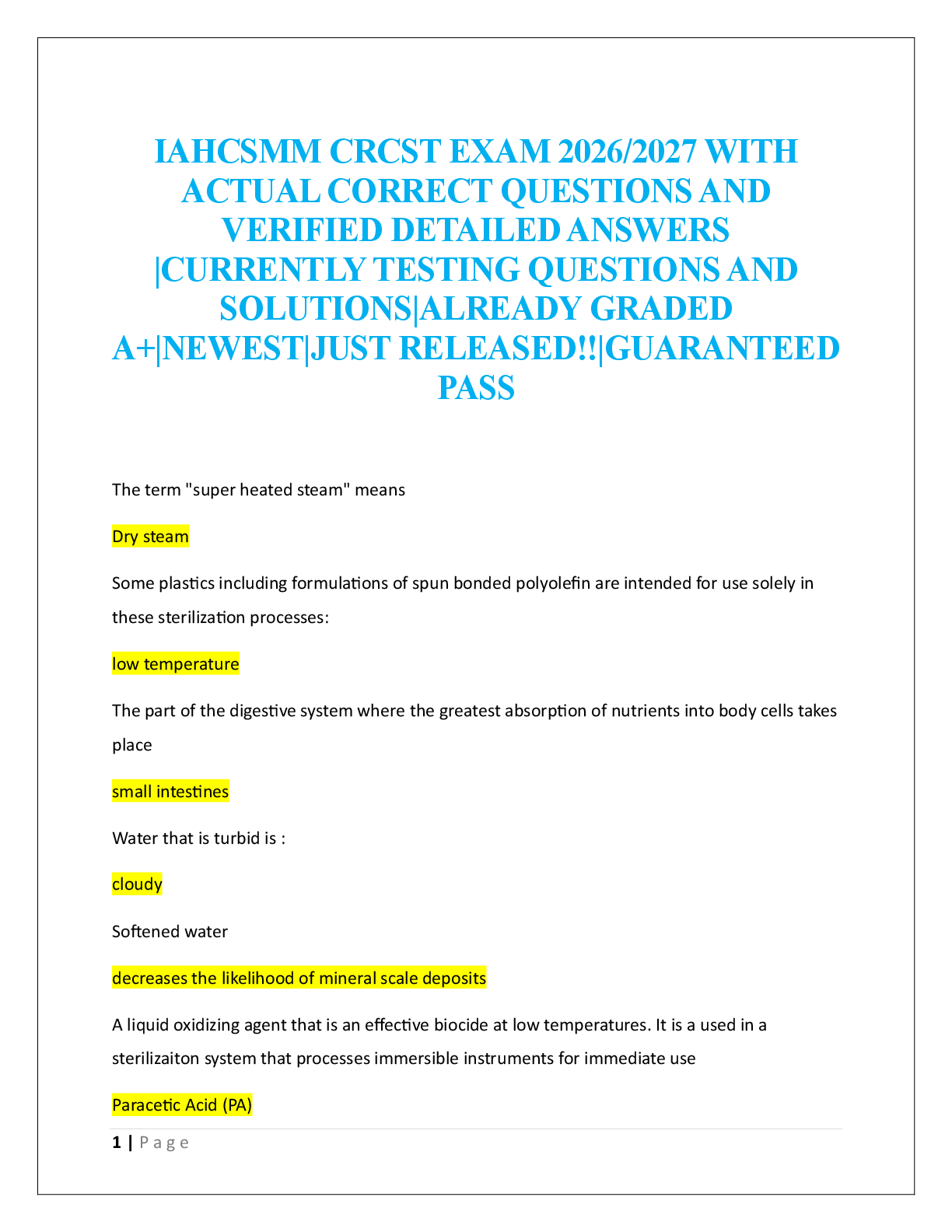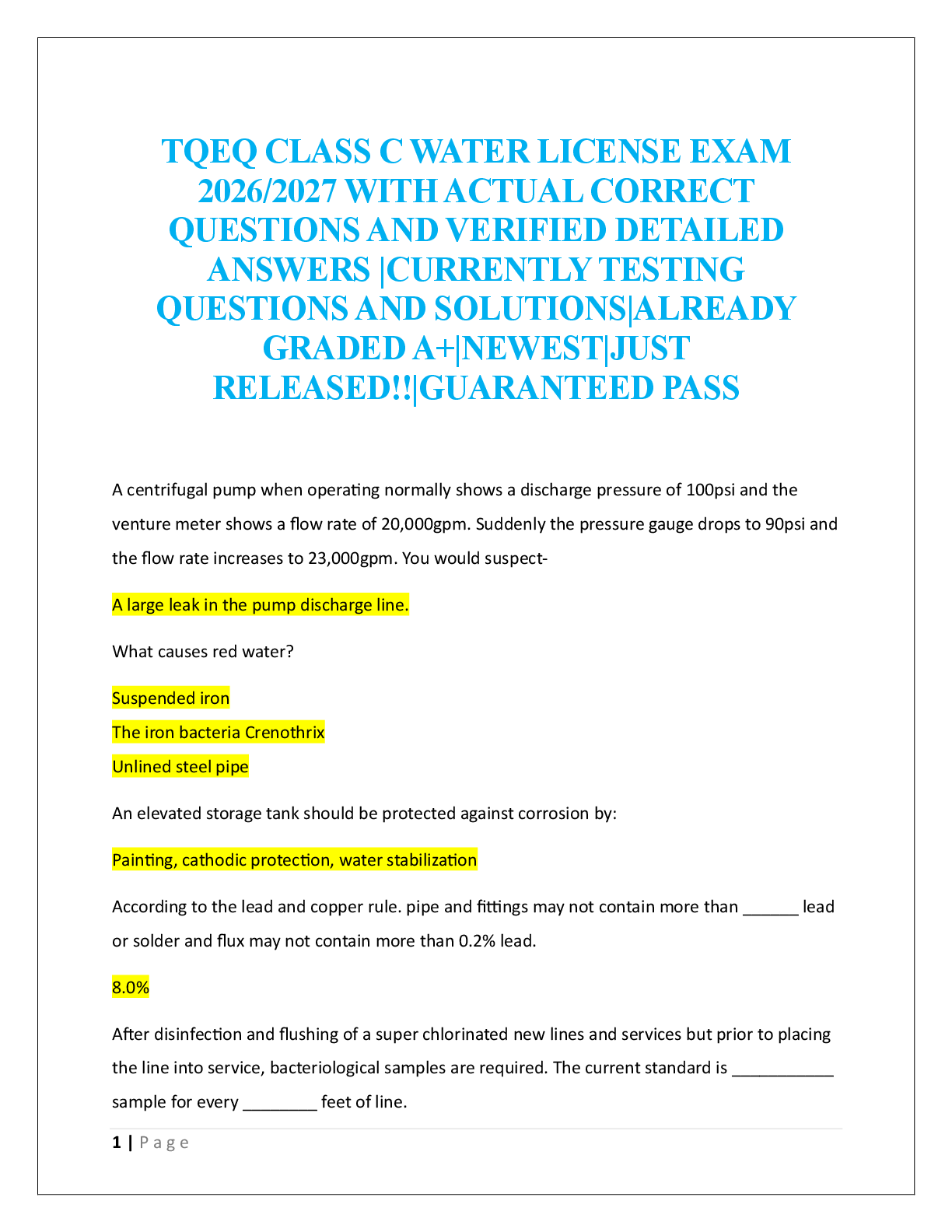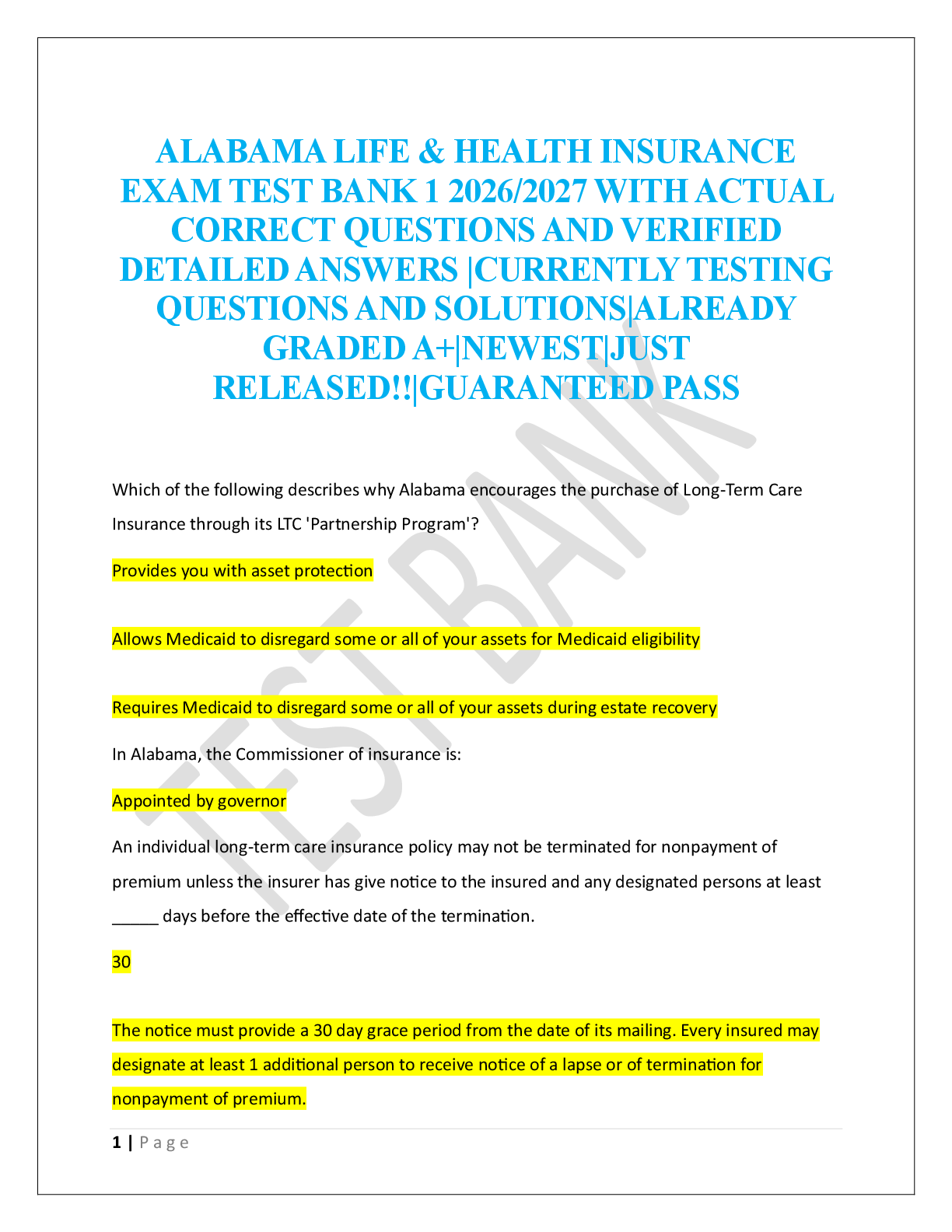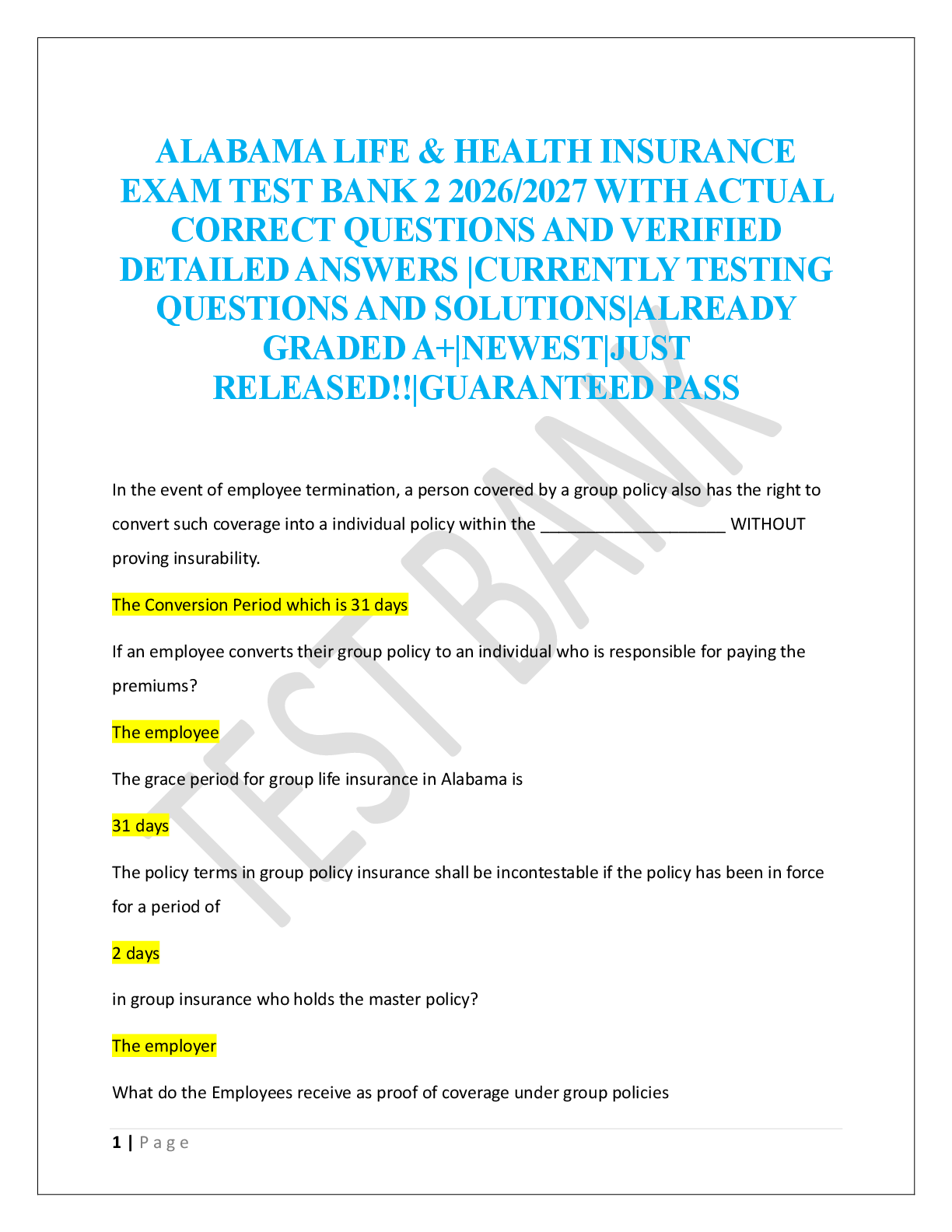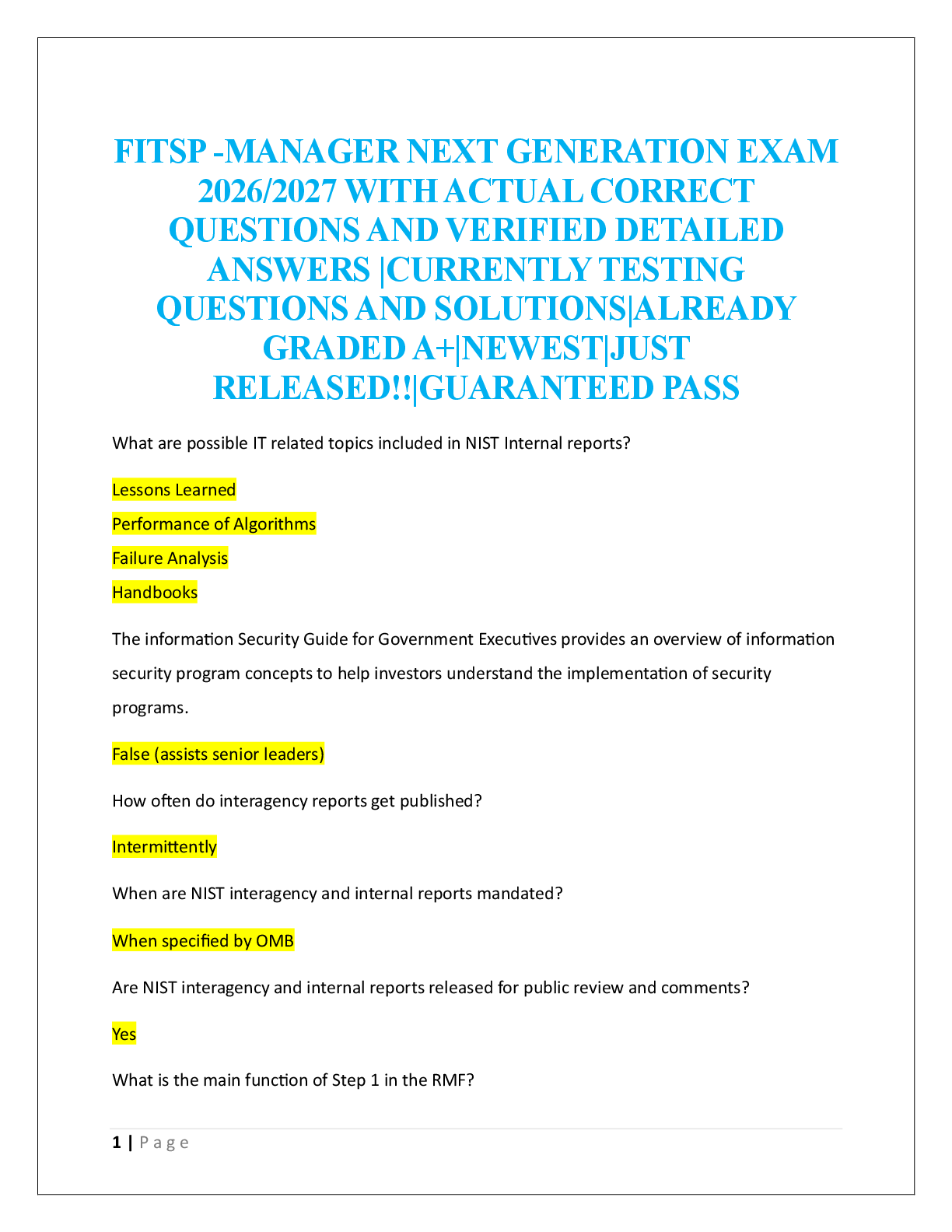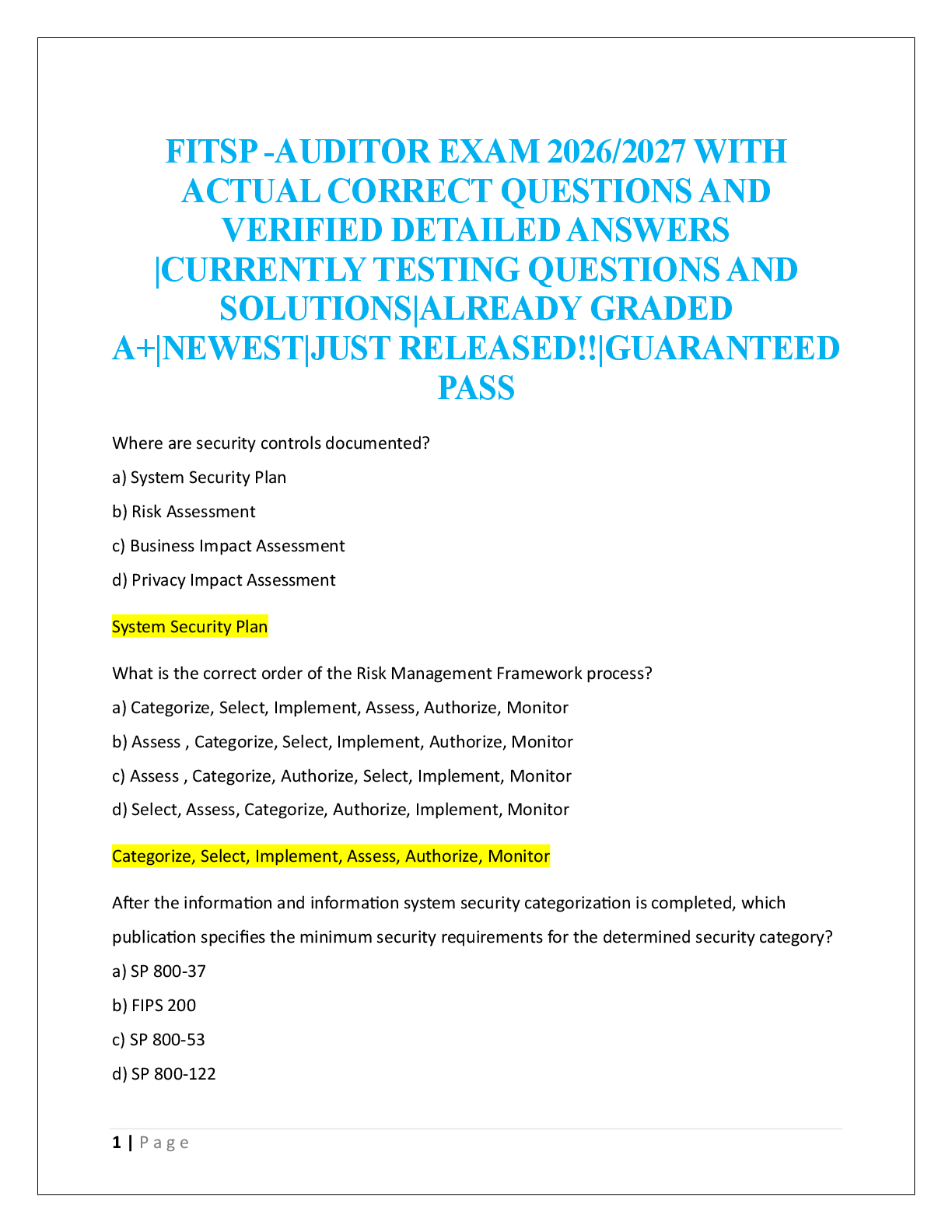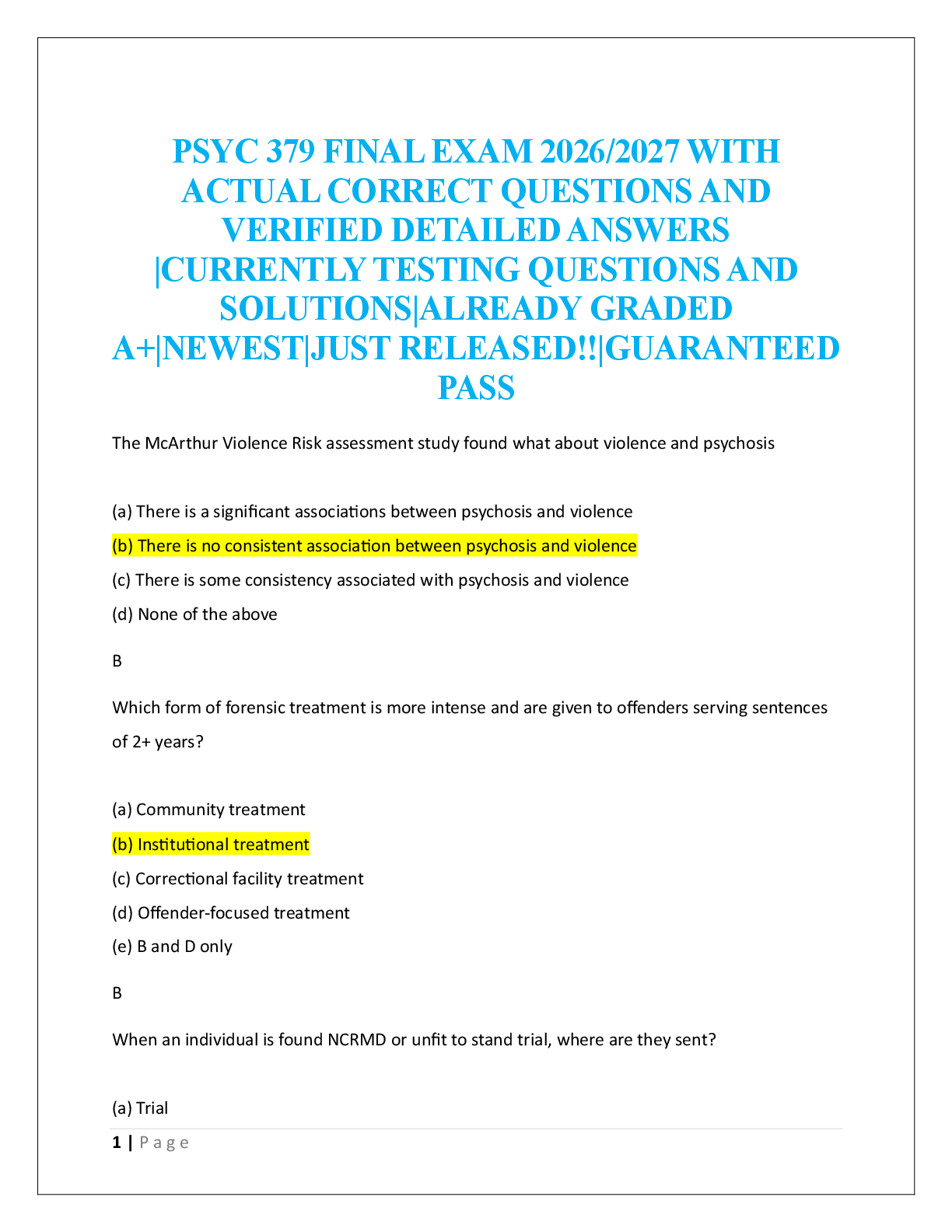NSG 6435 Week 7 Quiz - Questions and all the correct Answers 10/10 grade A
Document Content and Description Below
A newborn is born with a cleft lip and palate. The provider understands that the slit in the lip and mouth will introduce specific challenges for the parents and child. How best can a provider manage ... this condition before its repaired? (select all the apply) 2. Most young children walk on their toes until they establish the heel-toe pattern. This pattern usually develops within the first 6 months of walking. Toe walking can be idiopathic or secondary to a neurologic problem. Since it is important for the provider to differentiate between the causes; what should the provider do to accomplish this? (select all that apply) 3. An infant client is positive for moist, beefy-red macules and papules with sharply marked borders and satellite lesions to the diaper area. KOH-treated scrapings of satellite lesions show pseudohyphae. What is the most likely diagnosis? 4. A 15-year-old client presents to the clinic c/o tenderness to the right side. The pain started gradually and often radiates to the back. On exam the client is positive for Tietze syndrome. The provider diagnosis the client with Costochondritis. How should the provider treat this condition? (select all that apply) 5. Administer cortisone injections 6. A 9-year-old client in town for the summer presents to the clinic c/o a rash. Upon exam, the following is noted: multiple, annular, scaling, and discrete hypopigmented patches located on the trunk. KOH scrapings of the lesions revealed short curved hyphae and circular spores that fluoresced yellow-orange under the Wood’s lamp. What is the most likely diagnosed? 7. A 17-year-old client presents to the clinic c/o of small bumps all over the face. Upon exam, the following is noted: very small, firm, flesh-colored discrete papules 1 to 6?mm in size located to the face, axillae, and trunk. What is the most likely diagnosis? 8. A 5-year-old client who presents to your clinic is found to have small white oval cases attached tightly to the hair shafts at the back of the head, nape of the neck and eyelashes. What is the best treatment approach? 9. A 4-year-old client reports to the clinic with visible scratch marks to the arms. The mother explains that the client is restless, cranky and scratches throughout the day which intensifies at night. On exam, the following is noted: S-shaped burrows in the webs of fingers, sides of hands and forearms. What is the most likely diagnosis and the most appropriate treatment? 10. What are the key clinical signs and symptoms that are characteristic of the disease erythema multiforme? (select all that apply) [Show More]
Last updated: 3 years ago
Preview 1 out of 8 pages
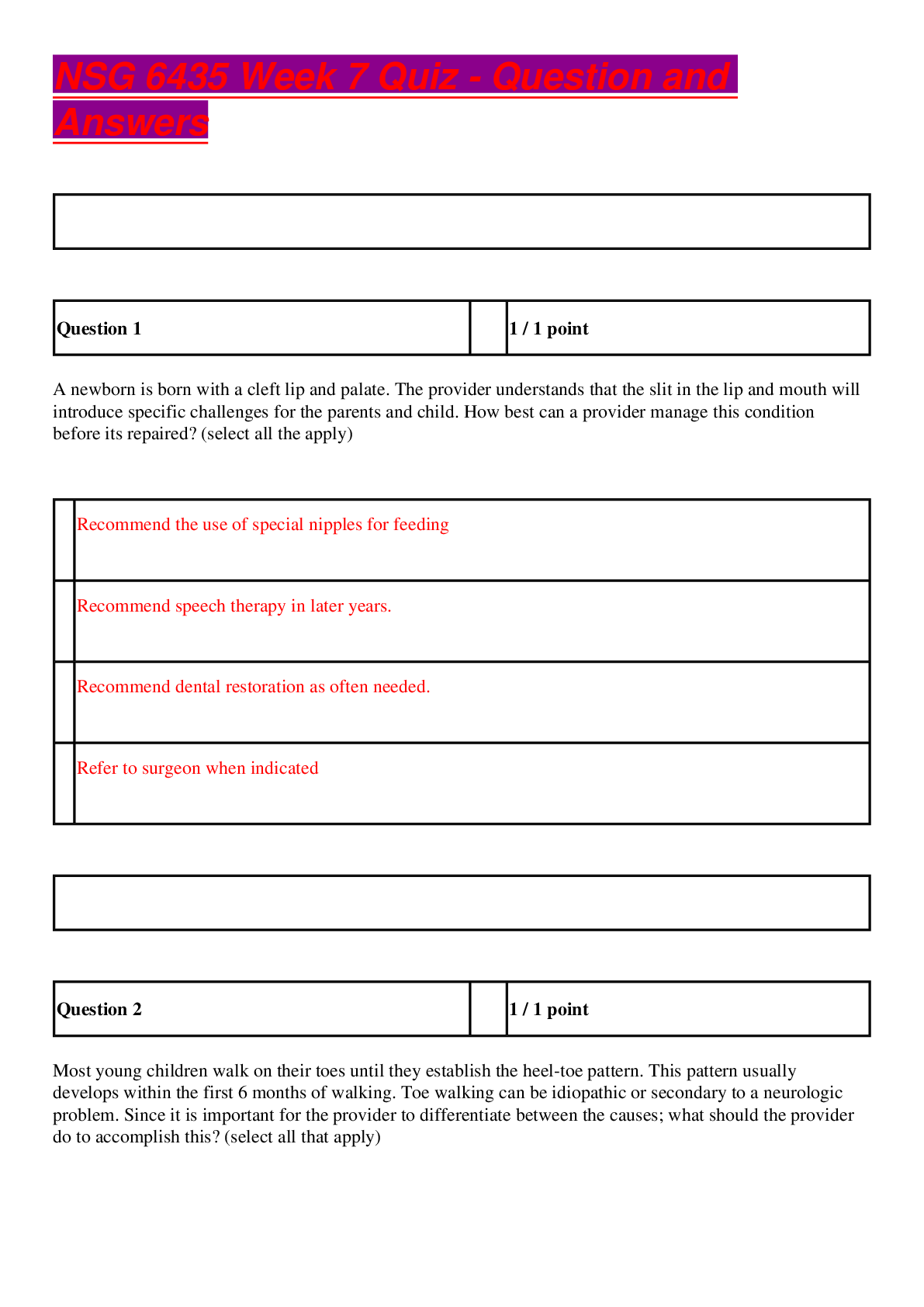
Buy this document to get the full access instantly
Instant Download Access after purchase
Buy NowInstant download
We Accept:

Reviews( 0 )
$7.00
Can't find what you want? Try our AI powered Search
Document information
Connected school, study & course
About the document
Uploaded On
Aug 06, 2020
Number of pages
8
Written in
All
Additional information
This document has been written for:
Uploaded
Aug 06, 2020
Downloads
0
Views
185

